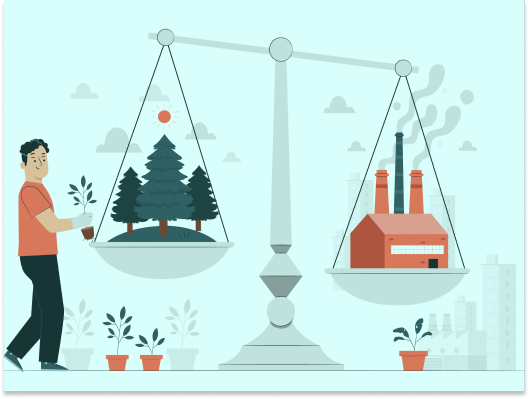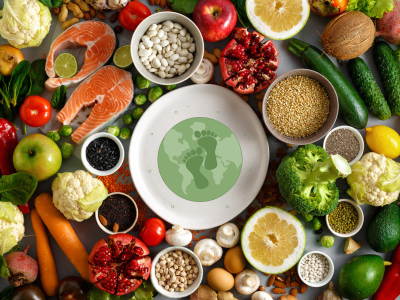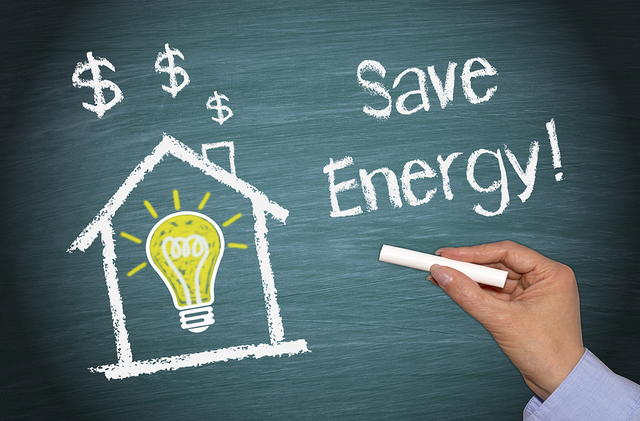Sustainability is the noblest concept to emerge in modern times, to preserve Earth for future generations. There’s a common notion that eco-friendly living necessitates eschewing all comforts. Simple actions can have a significant impact.
Sustainability may be implemented in every element and help minimise carbon footprint by agreeing to the healthy decision for the world, including how to get to work, where to shop, what to eat, and which products to use to keep home and surroundings clean.
Here are five sustainable lifestyle practices to get you started.
It’s important to practise the 3Rs.
The transition to a more sustainable way of living is exciting and challenging at the same time. Reducing, reusing, and recycling (the “3Rs”) may sound like an adage, but they’re crucial to making the planet a better place to live.
Everything about a product impacts the environment, from the raw materials to the production process to the pollution produced to the waste packaging that eventually ends up in a landfill. As a result, it is wise to know and assess the requirement for something before purchasing it. If you answered yes, you should buy all-natural, handmade products with minimal packaging.
Reduce or do away with plastic consumption
Everyone is aware of plastics’ destructive effects on the natural world. Most of it is destined for dumps or the ocean, where it may do severe damage to species and ecosystems. Many marine mammals, birds, and reptiles are killed yearly after becoming entangled in fishing nets or breathing in the plastic particles floating in the water. Eliminating plastic and replacing it with reusable and environmentally friendly alternatives is the most pleasing thing we can do for the planet.
You may help reduce plastic waste by switching to reusable bags, never using plastic straws or water bottles again, and not buying anything manufactured or packaged in plastic.
Eat more natural and organic products.
Choosing organic and natural foods is healthy for the planet and the health of your loved ones. Helping the organic and natural food sectors thrive also requires providing workers in the industry with decent wages and other benefits. When you can afford it, choose organic produce; doing so reduces the use of toxic pesticides and safeguards the health of farm workers, wild animals, and your own family.
Wear sustainable clothing and accessories.
When it comes to environmental impact, the fashion industry consistently ranks high. As a result, the handloom and the handcrafted sector have been growing slower than the fashion sector. The artisan community can benefit from a stable income source while providing a product with a longer lifespan and lower environmental impact.
Major clothing companies have gradually become more aware of the issue and adopted environmentally friendly production methods such as low-impact dyeing, upcycling natural materials, and producing organic pesticide-free cotton. Also, several new platforms have emerged offering organic garments to encourage sustainable living. It’s time for everyone to luxuriate in at least five handcrafted, natural clothing every year and embrace sustainable living.
Reduce your carbon footprint by greening your abode
A greener world involves minimising carbon footprint, and the better location, to begin with, is home. Your home’s energy efficiency will increase if you maintain it regularly and ensure proper insulation, emphasising energy-saving windows and energy-saving light bulbs for more efficient illumination.
Several little things may be done to make a home more environmentally friendly, such as limiting power use and using natural light. Some additional strategies can be to buy products composed of natural elements like bamboo that have a longer shelf life, look lovely, and are cost-effective. The aim is to reduce landfill garbage, clean the air, and preserve the natural landscape.
You may track every part of your carbon footprint with ‘Activity Explorer’ feature on the new Myplan8 app (launching soon) and get advice to reduce your carbon emission to achieve a sustainable living.
Think about this:
Every minute, one garbage truck’s worth of plastic enters the ocean. Marine litter and plastic pollution threaten aquatic life, human health, and the economy. Single-use plastics are made using fossil fuels, therefore they release carbon dioxide and other greenhouse gases. The extraction and delivery of fossil fuels to plastic factories releases 12.5 to 1.5 million metric tons of greenhouse emissions. Plastic production and incineration are estimated to generate 850 million metric tons of greenhouse gases in 2019, according to the CIEL. By 2050, this could reach 2.8 Gigatons of CO2, or 615 coal plants.
Over 25,000 tons of plastic garbage are produced every day in India, yet only 40% is collected. You may prevent all this by using the “3 Rs” (Reduce, Reuse, and Recycle).




